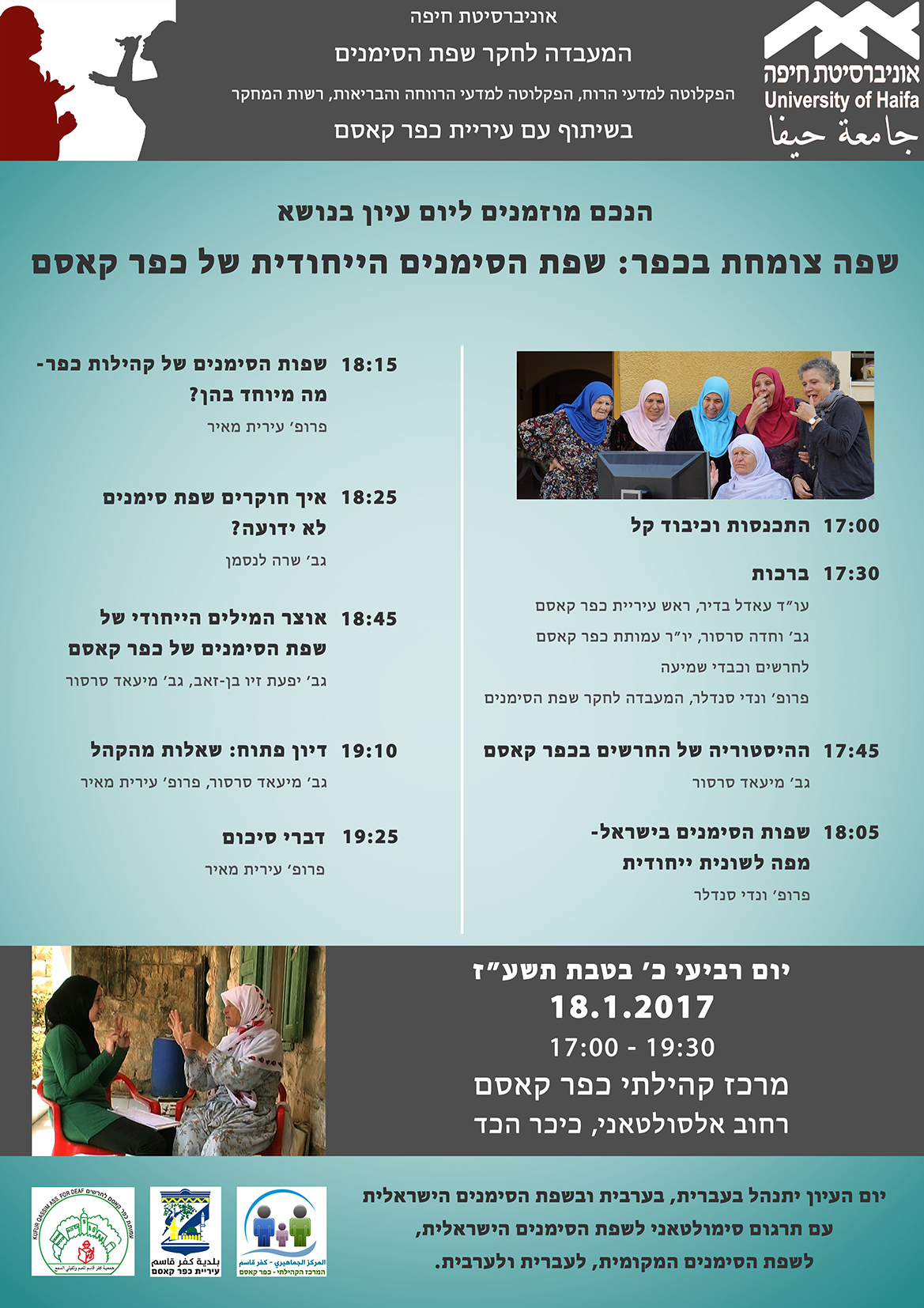בכפר קאסם יש יותר ממאה אנשים חירשים, ובמקום התפתחה שפת סימנים ייחודית למקום. פרופ’ עירית מאיר ופרופ’ ונדי סנדלר חוקרות את שפת הסימנים הזו בשיתוף פעולה עם מיעאד סרסור, בחורה חירשת מכפר קאסם בעלת תואר ב.א. מאוניברסיטת תל-אביב ועם אנשים נוספים מהעיר. “מיעאד עבדה כעוזרת המחקר שלנו בכפר קאסם”, הסבירה פרופ’ מאיר, “והיא מאוד מעוניינת לתעד את שפת הסימנים שצמחה במקום ולחקור את אופן התפתחותה”
לאחר כמה שנים של מחקר בכפר קאסם, צוות המחקר החליט שיהיה נכון לשתף את אנשי כפר קאסם וקהילת החירשים שם בממצאי המחקר – מה מיוחד בשפת הסימנים של כפר קאסם, איך היא משקפת את התרבות המקומית, ואיך צמחה השפה והתפתחה לאורך השנים. יחד עם מיעאד, הצוות ערך יום עיון שבו הוצגו הממצאים העיקריים של המחקר. יום העיון נערך במתנ”ס של כפר קאסם, והמקום המה מאנשים שהתעניינו בנושא, וביניהם ראש העיר, אנשי חינוך, שומעים וחירשים, צעירים ומבוגרים.במיזם זה התקיים שיתוף פעולה ייחודי בכמה מישורים: שיתוף פעולה יהודי-ערבי, שיתוף פעולה בין אוכלוסיית החירשים לאוכלוסיית השומעים, ובין הקהילה האקדמית לקהל הרחב.
There are more than one hundred deaf people in the town of Kafr Qassem, and an indigenous sign language arose among them. Professor Irit Meir and Professor Wendy Sandler are investigating this language, in cooperation with a young deaf woman from Kafr Qassem, Ms. Meyad Sarsour, a BA graduate from Tel Aviv University, and with other deaf people from the town. “Meyad worked with us as a research assistant in Kfar Qassem,” explained Prof. Meir, “and she is highly motivated to document the language that arose there, and to study its development.”
After conducting research on the language for several years, the research team felt the need to share their findings about Kfar Qassem Sign Language with the people who live there – to explain what is special about it, how it reflects the local culture, and how it first arose and developed. Together with Meyad, the team held a symposium, presenting the main findings of their research in the town’s community center, which was overflowing with interested residents, including the mayor, educators, and others of all ages, hearing and deaf.
This unique initiative was arranged with cooperation on many levels: Jewish and Arab, deaf and hearing, university researchers and members of the community at large.



